The Australian Beef Market in 2025: An Absolute Cracker
In this column in July, the StoneX H2 2025 Australian Cattle & Beef Market Outlook’s bold calls were analysed and assessed for what the final 6...
2 min read
Erin Lukey, MLA Senior Market Information Analyst : Sep 17, 2024
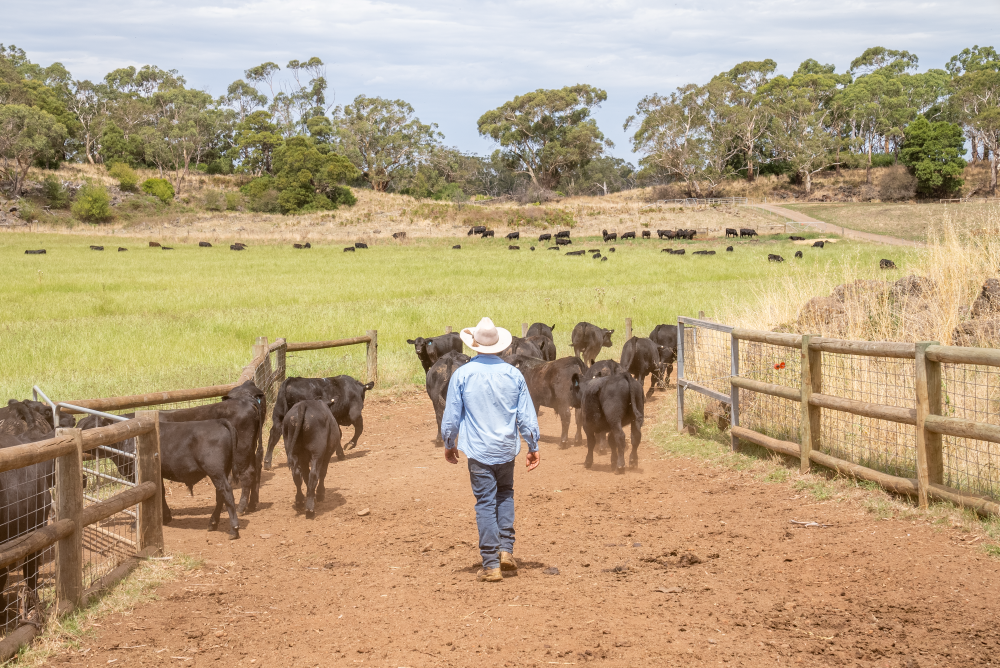
Last month, the Australian Bureau of Statistics released their quarterly slaughter and production data, including the number of livestock slaughtered over the quarter and the tonnes of meat produced. MLA uses this information to gather important insights for industry.
Firstly, the slaughter numbers enable MLA to understand supply and industry processing capacity. Beef production volumes offer an overview of the volume of beef available, and when used alongside export volumes, informs an estimate for domestic consumption. Combined, the two sets of data allow MLA to determine average carcase weights.
The category breakdown of total adult, cows and heifers, and bulls, bullocks and steers are used to understand male and female carcase weights, as well as the female slaughter rate.
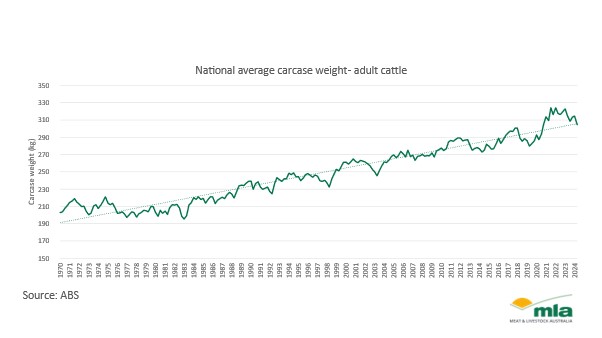
Carcase weights have been increasing since data collection began in 1970. Back then, the average adult cattle carcase weight was 207kg. In the second quarter of this year, 54 years later, the average adult carcase weight is nearly 100kg heavier at 305kg, representing a 47% increase. Improvements to production practices, operational decisions, export and domestic retail demands, investments in genetics, and growth in feedlots have all contributed to the growing change in carcases.
There are several factors influencing the average carcase weight figure, the most significant being the percentage of female slaughter. During periods of liquidation, more females are turned off. Female cattle are lighter than male cattle, so when there is a higher proportion of females being processed, the female slaughter rate lifts, which in turn brings down the average carcase weight. While carcase weights continue to trend upwards, there are short-term lifts and dips that match the destock-rebuild cycle.
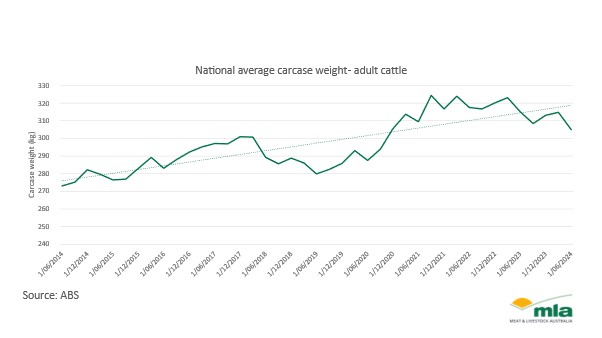
Looking in the short term, in the past 10 years carcase weights have lifted from 277kg to 307kg. Carcase weights hit 300kg for the first time at the start of 2018, however dipped over the following three years due to a drought-driven destock, which caused a higher portion of female turnoff. After this, the herd went into a strong rebuild phase, lifting weights back up as male cattle were turned off, and interest in lot feeding grew.
Since the tail end of the rebuild, and through the current maintenance period, carcase weights have flattened out as producers turn off the female breeding stock which were retained over the rebuild.
Current average carcase weights are:
Australia: 305kg
NSW: 301kg
Queensland: 317kg
SA: 306kg
Tasmania: 275kg
Victoria: 292kg
WA: 284kg.
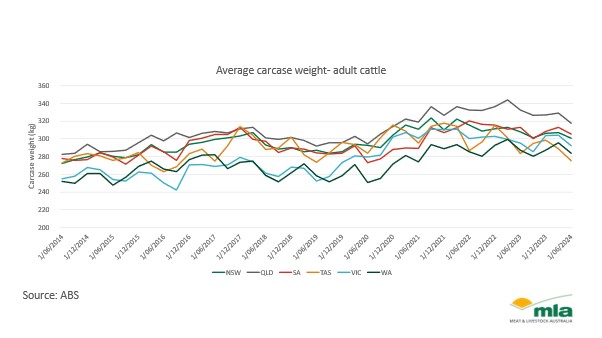
States with a larger dairy influence, such as Tasmania and Victoria, have smaller average carcase weights due to their higher female slaughter, while Queensland has the largest average weights due to their large feedlot sector.
Current carcase weights across all states have eased, quarter-on-quarter, and year-on-year. Most are sitting below their five-year average, however SA and WA remain above their short-term average.
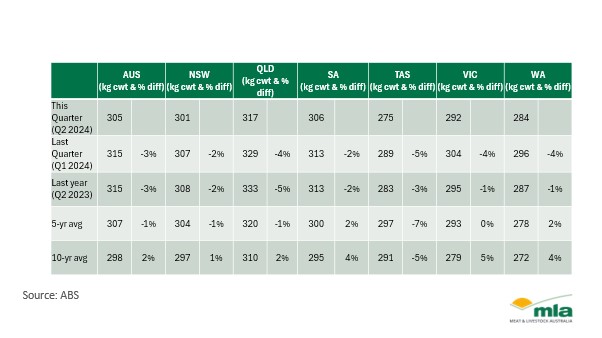
.jpg)
In this column in July, the StoneX H2 2025 Australian Cattle & Beef Market Outlook’s bold calls were analysed and assessed for what the final 6...
.png)
Each December we save the last article of the year for a bit of a crystal ball gaze, as we try to bring together market fundamentals and work out...
.png)
Australia’s wool market posted another strong performance this week, with all micron categories attracting solid support across the three selling...